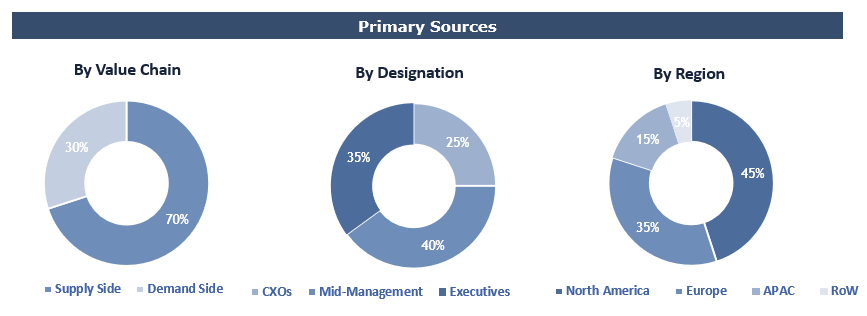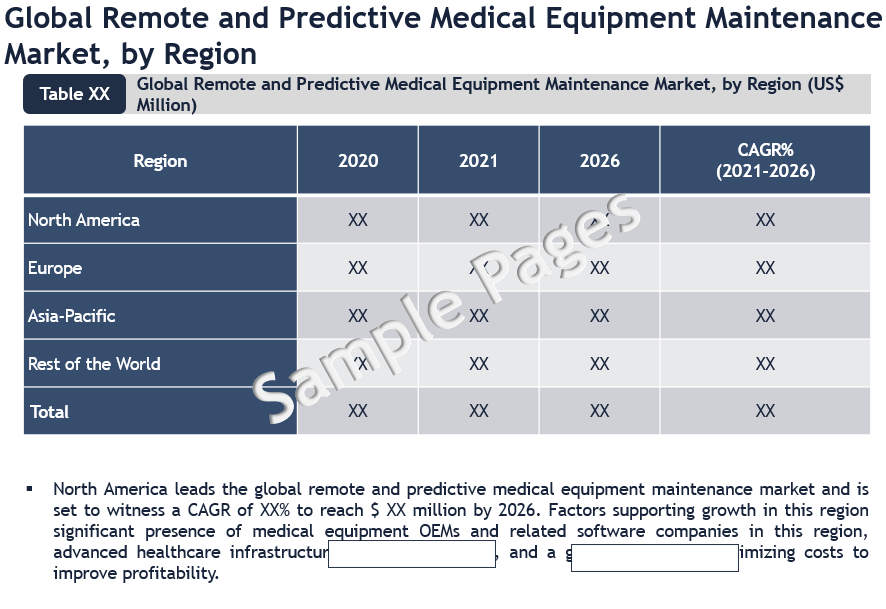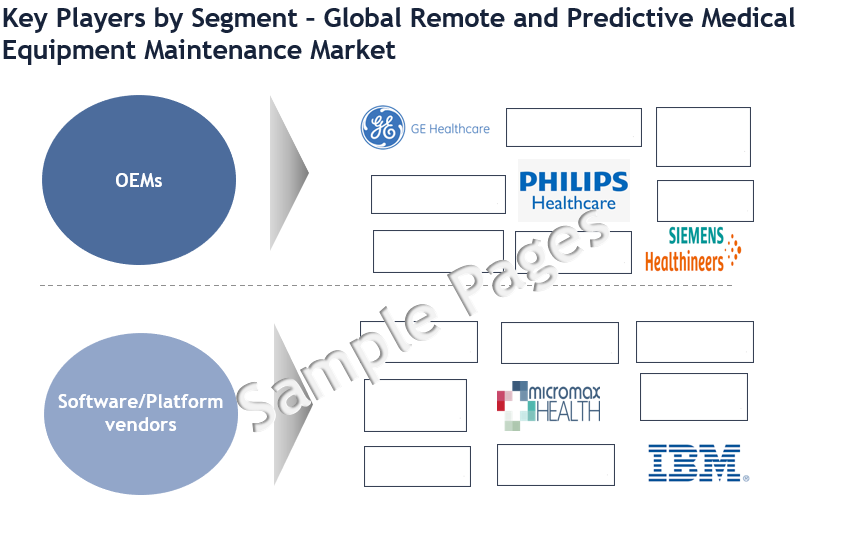
Remote and Predictive Medical Equipment Maintenance Market Research Report
The global remote and predictive medical equipment maintenance market is projected to witness a healthy and a double-digit growth, driven by many advantages offered by it over preventive or reactive maintenance, growing digitalization, and the urge to improve operational efficiency and extend equipment life.
The remote and predictive maintenance of medical devices is becoming prominent due to the growing digitalization and move toward connected devices and cloud-based infrastructure. The medical device industry is now increasingly embracing the use of advanced technologies like The Internet of Things (IoT), Artificial Intelligence (AI), and data analytics to resolve problems faster and effectively. The remote & predictive maintenance market was growing but Covid-19 gave it a much-desired push. However, perceived complexity and data security concerns may pose a challenge to high growth.
Move from Preventive/Reactive Maintenance to Predictive Maintenance
Preventive maintenance is typically scheduled on a recurring basis but could be sometimes unplanned. It is based on the theoretical failure rate and not on actual machine data. Moreover, reactive maintenance is time-consuming and breaks the operations workflow leading to costly downtimes. On the other hand, predictive maintenance is maintenance performed only when needed based on analytics on historical data to forecast suggested times for pro-active inspection or maintenance.
For real-time monitoring, IoT enables the continuous transmission of data from device sensors to the maintenance team who will remotely monitor the equipment. With the help of data analytics, the maintenance team identifies any unusual activity that may cause device failure and predict the equipment downtime. This Just-in-time maintenance strategy ultimately improves overall equipment effectiveness (OEE) levels. Thus, the medical device industry is rapidly shifting towards more proactive and predictive maintenance to reduce equipment downtime and maintenance costs, enhance asset utilization, extend equipment life, and improve operational efficiency, safety, and compliance.
The Emergence of Cloud-based Solutions
Modern healthcare systems support digital transformation goals. Healthcare organizations are moving more toward cloud-based platforms, to better automate processes. Some of the other driving factors include scalability, accessibility, cost-effectiveness, and security offered by cloud-based solutions more than ever before. Looking at the growth opportunities, companies are increasingly offering cloud-based solutions to remotely manage a fleet of IoT devices from anywhere in the world in an instant.
Positive Impact of Covid-19 on the Uptake of Remote Maintenance
Healthcare is one of the top industries that simply cannot afford extended downtime as it may cost a life. Preventing equipment outages at a distance is extremely important, as it enables the resolution of problems earlier and reduces both cost and downtime. However, this became more crucial post-pandemic.
Shortage of employees and technicians, high demand for medical equipment/devices, and global supply chain disruption during the COVID-19 pandemic forced companies to think about remote solutions to minimize downtime and increase the equipment output for smoother care delivery. This resulted in a surge in demand for remote and predictive maintenance solutions across the globe.
Healthcare organizations started using smart sensors, advanced artificial intelligence systems, and IoT solutions to track the condition and efficiency of vital equipment to avoid downtimes in such critical times.
North America Leads the Adoption of Remote And Predictive Medical Equipment Maintenance Market
From a geographical perspective, North America has a major market share of the global remote and predictive medical equipment maintenance market. This is mainly attributed to the significant presence of medical equipment OEMs and related software companies in this region, advanced healthcare infrastructure, strict compliance, and a greater focus on minimizing costs to improve overall profitability.
Competitive Landscape Analysis: Remote And Predictive Medical Equipment Maintenance Market
The global remote and predictive medical equipment maintenance market is highly competitive and fragmented with some established OEMs additionally offering remote services and several emerging IoT/software and service companies. Some of the key/promising players in operating in the remote and predictive medical equipment maintenance market are Philips, Siemens Healthineers, GE Healthcare, Fujifilm Healthcare, Canon Medical Systems, Draeger, Agfa, Transasia Bio-Medical, IBM, UptimeHealth, Kalypso, Karvy Analytics, InHand Networks, Althea, Accruent, Infinite Uptime, Robustel, Micromax Health, among others.
As a key growth strategy, companies operating in this market are focusing on adding/expanding their portfolio with remote and predictive maintenance software/services. For instance, in April 2020, to tackle the Covid-19 crisis, UptimeHealth launched TeleTech, a remote video service product that empowers technicians to carry out virtual repair work for healthcare facilities.
Key Strategic Questions Addressed
- What is the market size & forecast of the remote and predictive medical equipment maintenance market?
- What are the historical, present, and forecasted market shares and growth rates of various segments and sub-segments of the remote and predictive medical equipment maintenance market?
- How has Covid impacted the remote and predictive medical equipment maintenance market?
- What are the major growth drivers, restraints/and challenges impacting the market?
- What are the opportunities prevailing in the remote and predictive medical equipment maintenance market?
- Which region has the highest share in the global market? Which region is expected to witness the highest growth rate in the next 5 years?
- Who are the major players operating in the market? What is the competitive positioning of key players?
- What are the key strategies adopted by players in remote and predictive medical equipment maintenance market?
The study has been compiled based on the extensive primary and secondary research.
Secondary Research (Indicative List)

Primary Research
To validate research findings (market size & forecasts, market segmentation, market dynamics, competitive landscape, key industry trends, etc.), extensive primary interviews were conducted with both supply and demand side stakeholders.
Supply Side Stakeholders:
- Senior Management Level: CEOs, Presidents, Vice-Presidents, Directors, Chief Technology Officers, Chief Commercial Officers
- Mid-Management Level: Product Managers, Sales Managers, Brand Managers, R&D Managers, Business Development Managers, Consultants
Demand Side Stakeholders:
- Stakeholders in hospitals, diagnostic centers, multispecialty clinics & Other End Users.
Breakdown of Primary Interviews

Market Size Estimation
Both ‘Top-Down and Bottom-Up Approaches’ were used to derive market size estimates and forecasts.
Data Triangulation
Research findings derived through secondary sources & internal analysis was validated with Primary Interviews, Internal Knowledge Repository and Company’s Sales Data.



